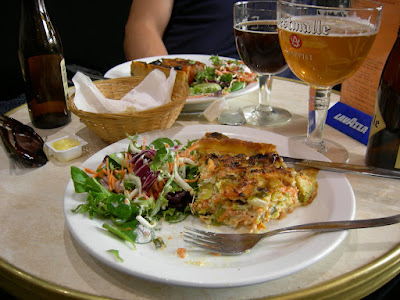 After dropping off my sister at the airport yesterday morning at 5am, I cracked open the book and got started on a batch of cinnamon rolls. They are probably the prettiest cinnamon buns that I've ever made and were very tasty. I started out with the basic recipe this time, but I think the next batch will include some dried fruit, orange zest, nuts, and honey. The whole process took about 5 hours, including mixing, proofing and baking. However, I learned that the initial steps can be done ahead and left in the refrigerator overnight before baking. I'll definitely take advantage of that next time!
After dropping off my sister at the airport yesterday morning at 5am, I cracked open the book and got started on a batch of cinnamon rolls. They are probably the prettiest cinnamon buns that I've ever made and were very tasty. I started out with the basic recipe this time, but I think the next batch will include some dried fruit, orange zest, nuts, and honey. The whole process took about 5 hours, including mixing, proofing and baking. However, I learned that the initial steps can be done ahead and left in the refrigerator overnight before baking. I'll definitely take advantage of that next time!I also made a batch of red beans and rice, which I thoroughly enjoyed for dinner last night (and breakfast this morning). After traveling and eating out for most of September, I'm excited to have time again to cook and experiment in the kitchen. I'm taking another class at PSU in Public Administration, which starts tonight. However, it only meets once a week, so I think it will be a lot more manageable than the summer course that demanded all of my time in July and August!
















































